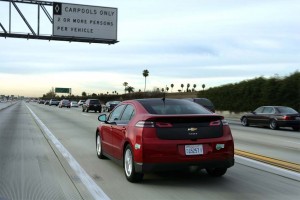
Whether battery cars, like the Chevy Volt, or more conventional products, cutting weight and improving aero are two critical challenges for designers.
Bigger is better. It’s been the automotive mandate since the days of Henry Ford. And with rare exception, that’s precisely what automakers have delivered, vehicles that grow bigger and heavier with every new generation.
But driven by consumer demand for better mileage – and rapidly rising federal fuel economy standards – the push is now in the other direction. According to many experts, the cars we drive will be substantially smaller and lighter by the end of the decade.
But the process isn’t as simple as it might seem, especially in the U.S., where people equate size with luxury. Complicating matters, Consumers expect more features and more and more safety equipment,” said General Motors designer Bob Boniface, and even that little CD changer built into the dash adds five pounds of mass.
Boniface was one of three designers invited to a panel addressing the subject of “lightweighting,” the challenging effort to deliver more of what customers want – and what government regulations require – while somehow lowering the mass of tomorrow’s automobiles.
Ford, for example, has set a goal of trimming as much as 750 pounds off the weight of future models. And other manufacturers have set similar goals. But getting there isn’t easy and will depend on some creative solutions from the industry’s designers and engineers.
Asked if they’d like to see government regulators back off on some of their safety standards, the three panelists admitted that mandates like new and markedly stricter roof crush rules can be a major headache. That rule, in particular, is why you’ll likely be seeing much larger windshield pillars in future vehicles.
But there are alternative solutions, noted designer Mark Trostle, of Chrysler, notably the use of advanced materials like super-light carbon fiber, which accounts for about 44% of the material used in the newly reborn Dodge Viper.
Mike Arbaugh, head of interior design at Ford, also pointed to aluminum, which his maker is using more and more of in its latest products, as well as the latest advances in high-strength steel, which have helped hold down the size of columns in products like the 2013 Ford Fusion.
But lighter materials typically carry heavier cost burdens, especially carbon fiber, which has traditionally been limited to only the most exotic supercars where weight is critical and cost is a secondary consideration. That may be on the verge of changing, however.
“It’s a beautiful material (that) we like because it looks good,” as well as being strong and saving weight, said Boniface, who oversaw design work on the Chevrolet Volt and now heads exterior design at Cadillac. Better year, “The cost is coming down and we will see it on more cars.”
It is already beginning to show up on accessories for some mainstream models, Boniface noted. But the big breakthroughs remain a few years away. A number of makers, including GM and BMW, are investing in companies that are working on ways to bring the cost of producing carbon fiber down. One of the first more mainstream uses will be with the launch of BMW’s dedicated battery sub-brand which will use the material on its i3 and i8 models.
One of the biggest problems in trying to reduce vehicle mass is the steady addition of new content, whether due to consumer demand or government fiat. Take that CD player which, noted few customers ever use anymore – but which they would likely object to were it removed. Not only does the CD player add about 5 pounds but it takes up valuable real estate.
“That’s oceanfront property when you’re talking about the center stack,” said Ford’s Arbaugh, space that could be used for any number of other dials, switches, displays and other devices.
As the panel – part of an event sponsored by the Detroit Automotive Press Association – pointed out, designers can do only so much to reduce mass. But there are other ways they can address the issue of fuel efficiency.
Like aerodynamics which, said Boniface. “in some ways is free.” Even relatively minor fixes, such as a redesigned sideview mirror, an improved rear spoiler or a cleaner underbody, can quickly generate what designers refer to as a lower “count.” Every 10 counts are the equivalent of trimming 50 pounds of weight off a vehicle.
The good news, said Chrysler’s Trostle is that there are lots of ways to make a car more aerodynamic and that doesn’t mean they will all need to look alike.
But they will have to get lighter and sleeker if manufacturers hope to meet both consumer expectations and government mandates alike.
